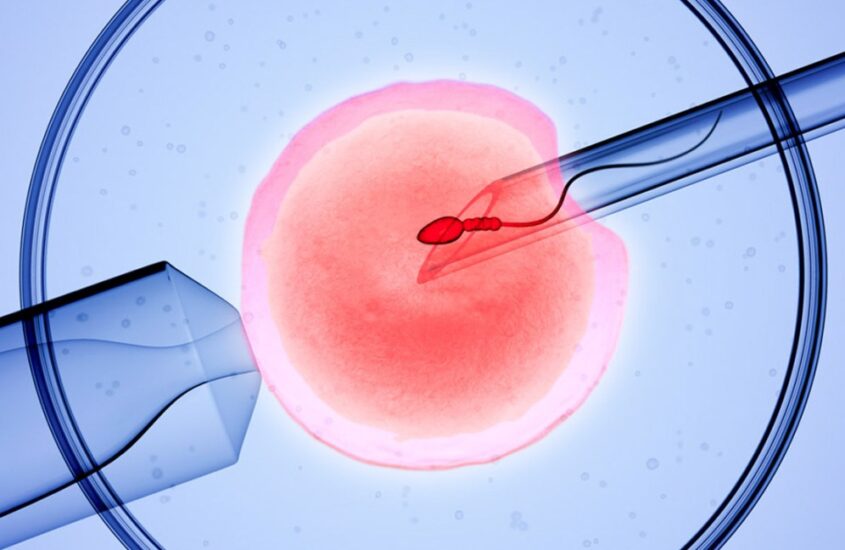Blastocyst Culture Centre Delhi Noida
A better form of IVF exists for couples: blastocyst culture. There is no better feeling than carrying your own child in your arms. In-vitro Fertilisation (IVF) has helped countless couples over the years and across the world to become a part of this feeling. However, IVF does not always lead to success. For complete information contact the best blastocyst culture center Delhi Noida.
What is Blastocyst Culture Centre Delhi Noida?
A blastocyst is nothing but a type of embryo after five-six days of fertilization. A blastocyst typically contains between 50-200 cells, broadly classified into two categories. The Inner Cell Mass is what will eventually develop into the fetus. The Trophectoderm, which is the outer layer, contributes to the fetus’s formation and also forms the placenta. In a healthy pregnancy, the embryo is created in the tubes, and it travels from it to the uterus undergoing cleavage (a division of cells) until it becomes a blastocyst.
For most of IVF history, it was very rare to develop blastocysts artificially successfully. The lack of ideal conditions only allowed a small percentage of embryos to reach the blastocyst stage, of which even fewer saw success when implanted in the womb. However, recent developments in IVF technology have allowed us to mimic the reproductive tract and the fluid in which the blastocyst develops. When an embryo is developed artificially till the blastocyst stage and then transferred into the patient, it is known as blastocyst culture.
Benefits of Blastocyst Culture over regular IVF
In simple terms, blastocyst culture is a type of IVF. Standard IVF involves transferring the embryo to the uterus after 2-3 days of fertilization. In blastocyst culture, the time needed is 5-6 days until the blastocyst stage is reached. So overall, there is merely a difference of three days. How much can three days really impact the outcome?
In a blastocyst culture, the doctors have more time to observe the embryos. A difference of just 2-3 days means that there would be many embryos that would fail to reach the blastocyst stage. In other words, the embryos selected in a blastocyst culture come from a better, fitter group. The simple implication is that if the embryo survived until the blastocyst stage, it is more likely to survive in the long run.
In the blastocyst stage, an embryo readies itself to implant into the womb. Hence, blastocyst culture also improves the chances of implantation. Lastly, regular IVF involves transferring multiple embryos in the hopes of increasing the chances of pregnancy. However, this method also often leads to multiple pregnancies – an outcome many parents find undesirable. But blastocyst culture only involves the transfer of a single, best embryo, thus always leading to single pregnancies.
Note: A common doubt that often arises is that if developing the embryo for just three more days increases the success rate by so much, why not develop it even longer before transfer? To know this, you must understand the life cycle of an embryo. After fertilization in the ovary, the embryo keeps developing and moving towards the uterus or the womb. It is 4-cell on day 2, 8-cell on day 3, and so on. However, by day 5, the embryo is ready to attach itself to the uterus. If we keep the embryo outside any longer, the implantation stage would be missed, and the embryo would not grow, even when transferred in the womb. Hence, five-six days is the maximum you could develop an embryo outside the womb.
Success Rate of Blastocyst Culture Centre Delhi Noida
Due to all the reasons mentioned above, blastocyst culture obviously has a higher success rate than regular IVF. There is no single, consolidated data to know the concrete success rate, as most clinics prefer to maintain their own records. But even the more abstract data helps us know how much better it is compared to standard IVF.
On average, 40 % of the embryos reach the blastocyst stage in a blastocyst culture. However, each of these embryos has a 65% chance of implanting to the uterus and about 60% chance of resulting in a healthy birth. In comparison, embryos in regular IVF only have a 15-20% chance of embryo of resulting in pregnancy. Furthermore, there is a meager chance of multiple pregnancies in the case of blastocyst culture, as only one embryo is needed to be transferred.
Who can benefit from Blastocyst Culture Centre Delhi Noida?
Like all medical options, blastocyst culture is not a free-for-all card that anyone can pick. Despite the high success rate, blastocyst culture is not meant for everyone. There are certain conditions where the doctor might dissuade blastocyst culture:
- If you have only one or two embryos, it would be unwise to wait for them to reach the blastocyst stage. Transferring them immediately would be the better choice.
- In the same vein, if you have a limited number of embryos and want to freeze them for future use, blastocyst culture might not be recommended as it would further reduce the number of embryos.
- While blastocyst culture mimics the natural reproductive environment quite well, it is not perfect. Hence, not all embryos respond well to blastocyst culture. Sometimes, immediately transferring them into the uterus might lead to the best development.
On the other hand, most patients can opt for blastocyst culture transfer to improve their chances of success. In particular:
- Patients who saw their previous rounds of IVF failing after transferring the embryo on day 2 or 3 can opt for blastocyst culture. The high success rate would significantly improve their chances of getting pregnant.
- Young women (under the age of 35) can use blastocyst culture to replace multiple embryo transfers with a single one. This significantly reduces their chances of multiple pregnancies.
- Older women (above the age of 36) often need to get multiple embryos to increase implantation chances. However, this also increases the chances of multiple births. Blastocyst culture can reduce the embryo count to merely two while increasing the success rate at the same time.
Conclusion Blastocyst Culture Centre Delhi Noida
Blastocyst culture has emerged as an amazing option for countless people – more successful but with fewer risks. For couples having trouble getting pregnant through conventional IVF, blastocyst culture might be nothing less than a boon.

